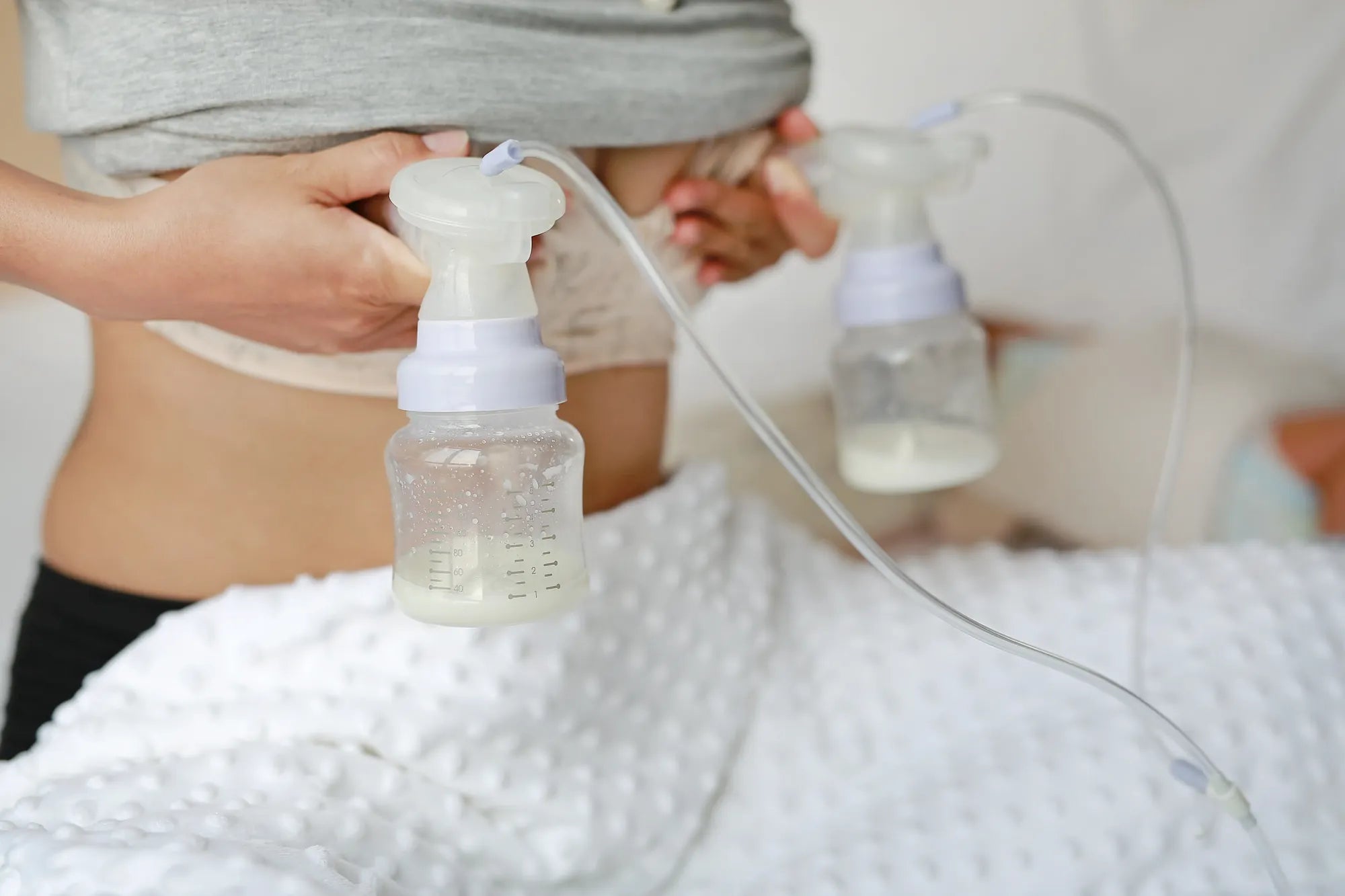Accueil
Pregnancy, Breastfeeding, and Pumping: The Ultimate Guide for Moms
When to Start Pumping Breast Milk While Pregnant: A Comprehensive Guide

When to Start Pumping Breast Milk While Pregnant: A Comprehensive Guide
Deciding when to start pumping breast milk while pregnant can be a pivotal moment in your journey to motherhood. For many expectant mothers, the thought of preparing for breastfeeding early can be both exciting and overwhelming. Understanding the right time to begin pumping, the benefits it offers, and the precautions to take can help you make informed decisions for you and your baby.
Understanding the Basics of Breast Milk Production
Breast milk production, also known as lactation, begins during pregnancy. Hormonal changes, particularly the rise in prolactin and estrogen levels, stimulate the mammary glands to start producing colostrum, the first form of breast milk. Colostrum is rich in nutrients and antibodies, providing essential nourishment for your newborn in the early days of life.
While your body naturally prepares for breastfeeding, pumping breast milk during pregnancy is not always necessary. However, some mothers choose to start pumping early for various reasons, such as building a milk supply or addressing specific medical needs.
When Is the Right Time to Start Pumping?
The ideal time to start pumping breast milk while pregnant varies depending on individual circumstances. Generally, healthcare professionals recommend waiting until the third trimester, around 36 weeks of pregnancy, to begin pumping. Starting too early can trigger uterine contractions, potentially leading to preterm labor.
However, if you have a medical condition that may affect breastfeeding, such as gestational diabetes or polycystic ovary syndrome (PCOS), your healthcare provider may advise starting earlier. Always consult your doctor before beginning any pumping routine during pregnancy.
Benefits of Pumping Breast Milk While Pregnant
Pumping breast milk during pregnancy offers several advantages. It can help you build a supply of colostrum, which can be stored and used after delivery. This is particularly beneficial for mothers who may face challenges with breastfeeding immediately after birth, such as those recovering from a cesarean section or dealing with latching issues.
Additionally, pumping can help you become familiar with the process, making it easier to transition to breastfeeding after your baby arrives. It also allows you to involve your partner or other family members in feeding, fostering a sense of connection and support.
Potential Risks and Precautions
While pumping breast milk during pregnancy can be beneficial, it is not without risks. As mentioned earlier, pumping too early can stimulate uterine contractions, increasing the risk of preterm labor. It is crucial to monitor your body's response and stop immediately if you experience any discomfort or contractions.
Another consideration is the quality of the milk. Colostrum produced during pregnancy may differ in composition from the milk produced after delivery. Ensure that any milk you pump is stored properly and used within the recommended timeframe to maintain its nutritional value.
How to Start Pumping Safely
If you decide to start pumping breast milk while pregnant, follow these steps to ensure a safe and effective experience:
- Consult your healthcare provider to determine the best time to begin pumping.
- Choose a high-quality breast pump that is comfortable and easy to use.
- Start with short pumping sessions, gradually increasing the duration as your body adjusts.
- Store pumped milk in sterile containers and label them with the date and time.
- Monitor your body for any signs of discomfort or contractions and stop pumping if necessary.
Expert Tips for Successful Pumping
To make the most of your pumping experience, consider these expert tips:
- Stay hydrated and maintain a balanced diet to support milk production.
- Practice relaxation techniques, such as deep breathing or meditation, to reduce stress and enhance milk flow.
- Create a comfortable and quiet environment for pumping to help your body relax.
- Seek support from lactation consultants or breastfeeding support groups for guidance and encouragement.
Common Questions About Pumping While Pregnant
Many expectant mothers have questions about pumping breast milk during pregnancy. Here are answers to some of the most frequently asked questions:
Can pumping cause preterm labor? Pumping can stimulate uterine contractions, especially if done too early. Always consult your healthcare provider before starting.
How much milk should I expect to pump? The amount of milk you pump will vary. Colostrum is produced in small quantities, so do not be discouraged if you only collect a few milliliters.
Can I use pumped milk for my baby after delivery? Yes, pumped colostrum can be stored and used after your baby is born, provided it is stored properly.
Preparing for Breastfeeding After Delivery
Pumping breast milk while pregnant is just one step in preparing for breastfeeding. After delivery, focus on establishing a good latch, feeding on demand, and seeking support from healthcare professionals if needed. Remember, every mother's breastfeeding journey is unique, and it is okay to ask for help along the way.
Deciding when to start pumping breast milk while pregnant is a personal choice that depends on your individual needs and circumstances. By understanding the benefits, risks, and best practices, you can make informed decisions that support your breastfeeding goals. Whether you choose to pump early or wait until after delivery, the most important thing is to prioritize your health and your baby's well-being.
Partager

